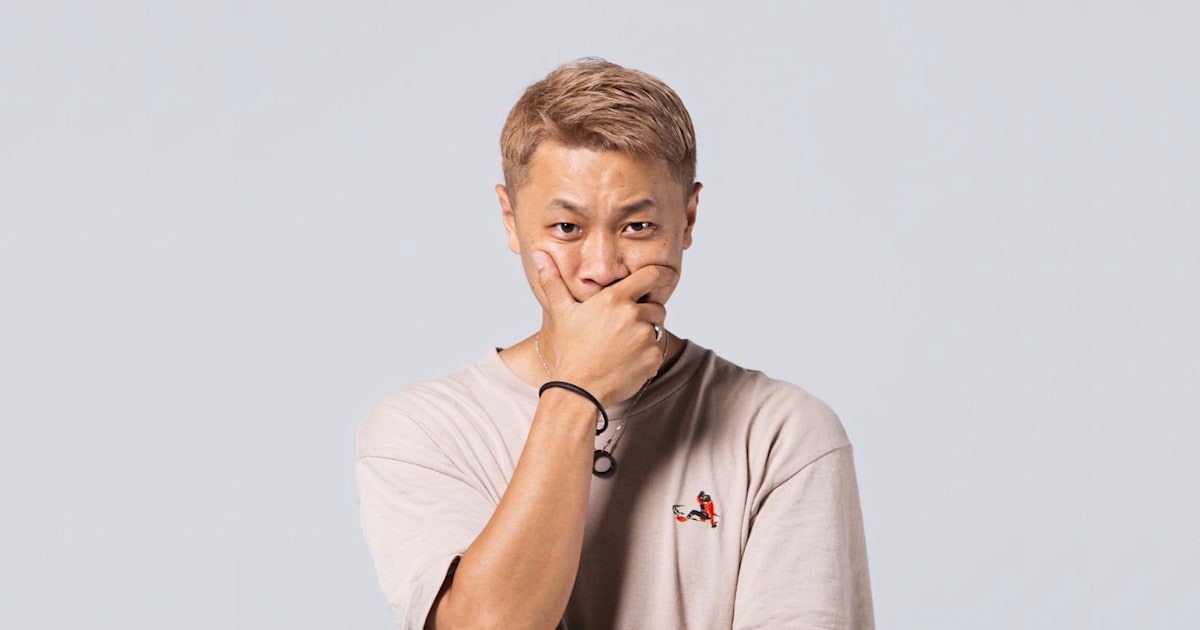
Almost 25 years ago, a Japanese schoolboy began to dance, inspired and fascinated by the music and movement of Michael Jackson.
Ishikawa Katsuyuki, better known as B-boy Katsu One, began breaking in earnest when he was at University. During his holidays he would visit the USA and Australia to watch breaking competitions and, despite his parents worrying about his future, decided to continue dancing after he graduated. In his first year after graduation, he won a competition in New Zealand and his name was mentioned in a local newspaper – something which began to change his family’s views about his art.
Since then, he has been in contact with many breakers across the world and is now a judge at a lot of competitions. In 2021, he chaired the WDSF World Championships in breaking.
As a schoolboy, Ishikawa could not have foreseen what his life would be like today.
“Not just my own future, but I’ve never imagined breaking would become what it is today,” he said.
It began at the Youth Olympic Games Buenos Aires 2018, where breaking truly made its debut on the world stage. Ishikawa came there as a coach on the Japanese team that ended the Games with three medals – two golds and a bronze.
Two years later the announcement was made that breaking would be part of the Olympic programme for Paris 2024.
Now Ishikawa has talked to Olympics.com about the beauty of breaking and the sport’s contribution to modern culture.
The development of the Japanese breaking scene
After witnessing the rise of the breaking scene in different countries, Ishikawa has pinpointed an essential factor in the development of the sport.
“If a ‘tree of hip-hop’ has been established in a country, the level of breaking becomes higher,” he said.
The term ‘tree of hip-hop’ refers to a structure in which the older generation passes down their knowledge and the culture of breaking to the younger generation.
Ishikawa sees those trees growing in Japan, as it has done in the USA and Europe.
“Younger breakers respect elder breakers. They hold workshops and ask the older generation to talk about their experiences and the history of breaking.”
“They value the old, but also innovate, which I think is very important in order for the scene to continue to develop,” Ishikawa continued.
Ishikawa now heads the breaking division of the Japan Dance Sport Federation and organises events and workshops throughout the year.
There has also been a change in the way parents think of breaking in Japan. They are now more open to the opportunities breaking professionally may bring. As far as career choices go, the success of sports such as skateboarding, snowboard and breaking, which has seen two world champions crowned in the last two years, shows that you can make a living from these formerly fringe activities.
“I’m in my early forties and people my age are having kids. I feel like fewer parents have a ‘you can’t make money from breaking’ mindset, and more parents want their kids to do cool things.
“In fact, many of the world’s top breakers have supportive parents,” said Ishikawa.
Breaking and connecting
While Ishikawa began his role developing the breaking scene 25 years ago, it has now become a major part of his life.
“You can express yourself however you want,” he said. “It’s acceptable to do so and a unique part of the art. You can be free.”
The culture also respects individual characters and people from all walks of life.
“If you have some sort of disability, that’s fine. If you are heavy set, that’s OK. If you have an extremely flexible body and can use it in the way you want, that’s also OK. It’s all good… what you may think of as a limitation becomes something attractive in the breaking world.
“Everyone is accepted and that’s cool. Breaking gives you a level playing field.”
Breakers often provoke each other during dance battles, but does this ever develop into physical fights?
“It’s quite rare, but sometimes it happens,” said Ishikawa. “They get heated and suddenly it kicks off. But even if it happens, the people watching them will stop them and calm them down.
“It’s an absolute rule that you cannot touch each other.
“The types of battles that happen outside of competition may be the most interesting. After communicating with each other through dance, we often find years later that we have a bond with each other. We forget we were adversaries and even discuss partnering up.
“This is also something amazing about breaking culture. If you dance, you make friends easily. If I go to practice in another country I meet breakers who often invite me to their houses, so I rarely book a hotel when I holiday abroad. That’s how breaking communities are formed all over the world.”
It all makes sense when you consider the origins of breaking.
Breaking developed in the mainly poor black neighbourhoods of the South Bronx in New York in the early ‘70s. It served as an alternative to physical violence and played a role in settling disputes, before later becoming a culture that spread worldwide, creating crews with strong bonds in different parts of the country.
“It would be great to see more people engaged with breaking through the Olympics or because of the exposure it will get from the media. I hope that, from there, our values will spread and more people realise that breaking is fantastic.”
from WordPress https://ift.tt/jQrfyg3
via IFTTT

No comments:
Post a Comment